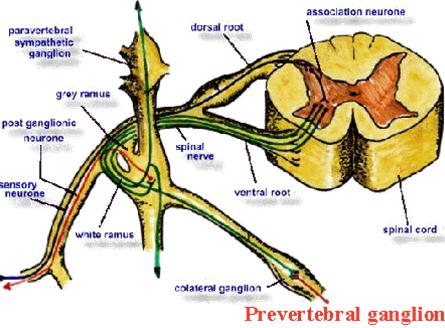The findings could have implications for future treatments for skeletal and neurological diseases

Researchers at the Hebrew University discovered a new neural pathway with the help of which the brain controls the development of the skeleton. The new pathway belongs to the parasympathetic nervous system, which until now had no information about a connection between it and the skeleton. The new pathway plays a key role in controlling bone density during puberty, which determines the skeleton's resistance to fractures throughout life. Its discovery may contribute to the development of treatments for bone diseases such as osteoporosis and various neurological diseases.
The study was conducted by a team of researchers from the bone laboratory at the Hebrew University led by Prof. Itai Bab from the Faculty of Dentistry and in collaboration with Prof. Raz Yeremia from the Department of Psychology at the university, the doctoral students Alon Bejaio and Vardit Krem and the graduate students Eric Bar and Marilyn Becher. Dr. Adam Danesh from the University of Manchester in the UK and Prof. Alberta Zalona from the University of Bari in Italy also took part in the study. The research was funded by grants from the Germany-Israel Foundation for Research and Development and the Israel National Science Foundation. The research findings are published this week in the prestigious journal PNAS (Proceedings of the National Academy of Sciences) in the USA.
The parasympathetic nervous system, which is responsible for actions of relaxation and conservation when the body is at rest, is part of the autonomic nervous system that regulates the body's unconscious actions, such as heartbeat, breathing, sweat and saliva secretion. Its corresponding system - the sympathetic nervous system - is responsible for the body's immediate reactions in stress and emergency situations. Both together serve as the main communication routes between the brain and the internal organs of the body and each operates in its own unique routes.
Studies published in the last decade have shown that the bones receive sympathetic nerves that cause the skeletal development to slow down, but until now there was no information about a parasympathetic pathway that reaches the skeleton.
To demonstrate parasympathetic innervation of the skeleton, the researchers examined the spread of rabies virus in the bodies of mice. The rabies virus has a unique feature - it spreads from the periphery towards the brain along the nerves that reach the area of infection. Indeed, the researchers showed that the virus, which was injected into the femur, was found not long after in brain areas that are unique to the parasympathetic system. The researchers also demonstrated the presence in the bones of components typical of the parasympathetic system, such as the neurotransmitter acetylcholine and the enzyme that breaks it down, as well as receptors for acetylcholine in bone cells.
In the past, the same research group discovered that the activity of a certain protein (interleukin-1) in the brain also affects bone development. Now the researchers noticed that the effect of the protein on the bones is almost the same as the effect of the parasympathetic system on them. Therefore, the researchers continued and examined the relationship between the two activities. Indeed, the researchers were able to show that the paralysis of the protein activity in the brain causes the paralysis of the parasympathetic activity in the bone and the delay in the development of the skeleton. Furthermore, they found that the new neural pathway they discovered, which consists of the protein in the brain and later the parasympathetic system, also controls the heart rate.
"The relationship between the brain and the skeleton in general, and the involvement of the new neural pathway in particular, is a new field of research and very little is known about it," says Prof. Babb. "The new findings discovered in our laboratory show for the first time an important physiological role for the connection between the protein found in the brain and the parasympathetic nervous system, and as in the case of the skeleton and the heart, the new pathway probably has an important role in other organs as well." Prof. Yeremia adds that "low bone density and osteoporosis often appear in combination with neuropsychiatric diseases such as depression, Alzheimer's and epilepsy, which impair the activity of the parasympathetic system and of the specific protein in the brain. Identifying the mechanisms of the disease in these cases has enormous potential in the development of innovative treatments."

One response
Beautiful and interesting.. goes hand in hand with studies that have shown that people whose sympathetic system dominates (under constant stress) have an increased risk of osteoporosis.